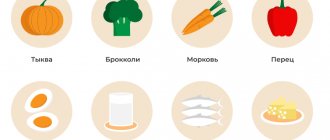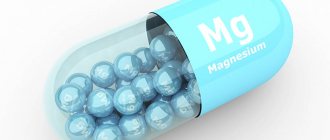The microelement zinc belongs to the class of vital substances. The adult human body contains about 2 g of zinc (the highest concentration is observed in muscle and bone tissues, liver, pancreas and prostate, but zinc is also found in all other tissues and cells). It is contained in more than 400 enzymes involved in the synthesis of proteins, DNA and RNA chains, adelgids and other substances necessary for the normal functioning of body systems, stimulating cellular metabolism, strengthening the immune system, improving digestion, and stimulating other important functions.
The body can deposit zinc only in small, limited quantities, and easily spends reserves for emerging needs (for example, for wound healing), which makes it necessary to replenish the amount of this microelement daily. The average daily intake of zinc according to various sources ranges from 8 to 15 mg. You can get the mineral from food (oysters, beef, lamb, sesame and pumpkin seeds, pine nuts are the richest in it), as well as by taking special bioactive supplements with zinc.
When choosing medications, the question often arises in what form to take zinc - in the form of picolinate, citrate, sulfate, oxide, or some other? You will find the answer to this question later in this article.
Signs of Zinc Deficiency
Zinc deficiency has negative consequences for the body:
- deterioration of central vision;
- disruptions in the functioning of the immune system;
- complications during pregnancy (early birth, disturbances in fetal development).
With a lack of zinc, there is often an excessive tendency to pneumonia and diarrhea. Deficiency of this vitamin at the initial stage does not have specific symptoms. In some cases, insomnia develops, hair begins to fall out, night vision deteriorates, mood decreases, and skin lesions take a long time to heal.
If you have such symptoms, you should consult a doctor.
Forms of zinc
There are a wide variety of forms of zinc, varying in degree of bioavailability (digestibility). Today, only the best forms of zinc are used for medical purposes. Among them: sulfate, oxide, glycinate, gluconate, picolinate, chelate, acetate and citrate. Let's take a closer look at these forms of zinc and their absorption:
- Zinc sulfate. Water-soluble form of the trace element. It takes longer and is most often used for the production of drugs and vitamin complexes (including due to its low cost), but has low bioavailability (only 48%). In addition, it negatively affects the gastrointestinal tract and can cause vomiting, heartburn, diarrhea, and abdominal pain. Toxic. It is not recommended to take medications containing zinc sulfate orally without a doctor's prescription.
- Zinc oxide. Just like sulfate, it is the cheapest and most common form of zinc in pharmacology. It is also used in the production of dietary supplements, but is mainly found in ointments, powders, pastes and liniments (as it is characterized by low digestibility - only 48%). Less toxic than sulfate, but in overdose can cause the same side effects as sulfate.
- Zinc glycinate. Chelated form of a trace element (that is, associated with an amino acid, in this case glycine). The organic compound is characterized by high bioavailability (54%), is easily absorbed by the body, does not irritate the mucous membranes of the gastrointestinal tract, and is less likely to cause side effects. An example of a drug is Zinc Glycinate from NOW Foods
- Zinc monomethionine. A chelate compound that combines the mineral with the amino acid methionine. It is often used in the production of lozenges for the prevention of colds and dietary supplements to compensate for zinc deficiency. It is absorbed slightly better than glycinate (58%).
- Zinc acetate. Also known as zinc salt dihydrate. It is well absorbed (60.9%), used mainly for the production of cold medicines and dietary supplements with zinc, and is included in many ointments for the treatment of acne.
- Zinc gluconate. One of the most popular forms of zinc. Successfully combines good digestibility (60.9%), safety and relatively low cost. In pharmacology, it is used both as part of tablets and lozenges for the treatment and prevention of colds, nasal sprays, various ointments, and in the production of vitamin and mineral supplements. An example of a drug is Zinc 50 mg from NOW Foods
- Zinc picolinate. Organic compound with picolinic acid. One of the best forms of the microelement, it is characterized by high biavailability (60.9%) and safety. This form is most often recommended for pregnant women, the elderly and patients with severe zinc deficiency. An example of a drug is Zinc 50 mg from NOW Foods
- Zinc citrate. Organic compound with citric acid. It is characterized by maximum digestibility (61%) and the most pleasant taste. Easily tolerated and does not cause side effects.
The name Zinc Chelate can hide any of its organic compounds with amino acids (glycinate, gluconate, picolinate and others). All of them are safe and have high bioavailability (on average 60.9%). That is why chelated compounds are called the best forms of zinc and are recommended for use in most cases. Examples of drugs - Chelated Zinc from 21st Century
,
Nature's Plus Zinc 10 mg / Zinc 10 mg 90 tablets
There are other forms of zinc (glycerate, sulfide, orotate, etc.) also used in the production of pharmaceutical drugs, but they are less common, so we will not consider them today.
Reasons for the development of zinc deficiency
Doctors say that therapy for many diseases should begin with the prescription of drugs that contain zinc. This is especially significant for vegetative-vascular pathologies, gastric ulcers, prostate tumors, skin lesions, and burns.
A lack of zinc in the body can be caused by malfunctions of the thyroid gland. Something like this happens:
- for liver pathologies;
- lack of this vitamin in water and food;
- too much phytin in food, which “binds” zinc, making it difficult to absorb (it is unacceptable to take the mineral together with selenium, these substances do not combine with each other);
- oncological diseases;
- taking oral contraceptives, corticosteroids (drugs prescribed for arthritis, bronchial asthma).
The body experiences a lack of zinc in leukemia and when food contains too much protein.
The absorption of this mineral may be impaired by the use of dietary supplements fortified with calcium and potassium. Caffeine and alcoholic beverages speed up its elimination from the body.
Zinc concentration decreases under stress and under the influence of toxic metals.
Problems with the absorption of the mineral can be observed with genetically determined enteropathies, diarrhea, and lack of absorption in the small intestine.
With increased physiological needs: during pregnancy and adolescence, doctors often prescribe vitamin complexes containing zinc and other beneficial substances to compensate for its deficiency.
Benefit for health
Zinc plays an invaluable role in supporting the health and normal functioning of the entire body. Among the main beneficial properties of the microelement are:
- participation in metabolism and cellular energy exchange (part of enzymes that improve the absorption of nutrients and accelerate the removal of waste products from the body);
- stimulating the production of hormones (insulin, corticosteroids, testosterone), as well as nucleic acids, proteins and other substances necessary for health;
- strengthening the immune system (has powerful antibacterial and antiviral properties, reduces the duration of colds);
- maintaining heart health (regulates the flow of calcium ions into heart cells and prevents oxidative stress by stimulating the production of the antioxidant glutathione);
- improved digestion (normalizes intestinal permeability, improves absorption of nutrients, prevents the occurrence of diarrhea);
- stimulation of reproductive function (improves the quality of germ cells, supports the health of the prostate gland in men, affects the development of the genital organs in girls during adolescence);
- normalization of blood sugar levels (regulates insulin secretion, increases the body's sensitivity to this hormone, reduces the risk of developing diabetes);
- regenerative functions (promotes healing of wounds and injuries, muscle growth and restoration, necessary for children during growth and women during pregnancy);
- improvement of brain functions (needed for correct perception of taste and smell, has a beneficial effect on memory, coordination, thinking);
- providing vision support (preserves the health of the retina, prevents the development of cataracts, night blindness, age-related degenerative changes in the eyes);
- improving the condition of the skin (fights acne, eczema and psoriasis) and hair (thickens the structure, prevents hair loss).
Clinical significance of zinc deficiency for children's health: new possibilities for treatment and prevention
Z
The importance of zinc for the human body has been actively discussed in recent years. This is due to its participation in the metabolism of proteins, fats, carbohydrates, and nucleic acids. Zinc is a component of more than 300 metalloenzymes. It is part of the genetic apparatus of the cell.
For the first time, zinc deficiency conditions were described by A. Prasad in 1963 - as a syndrome of dwarfism, hypogonadism, disturbance of normal hair growth, testicular atrophy, prostate gland and severe iron deficiency anemia. The importance of zinc for the processes of growth and cell division, maintaining the integrity of epithelial integuments, the development of bone tissue and its calcification, ensuring reproductive function and immune reactions, linear growth and development of the cognitive sphere, and the formation of behavioral reactions is known. Zinc helps stabilize cell membranes, is a powerful factor of antioxidant protection, and is important for the synthesis of insulin. Its role in the energy supply of cells and resistance to stress has been established. Zinc promotes the synthesis of rhodopsin and the absorption of vitamin A.
Zinc enters the body through the gastrointestinal tract along with food, as well as with pancreatic juice. Its absorption occurs mainly in the small intestine: 40–65% in the duodenum, 15–21% in the jejunum and ileum. Only 1–2% of the microelement is absorbed at the level of the stomach and colon. The metal is excreted in feces (90%) and 2–10% in urine.
In the body, most of the zinc (98%) is found mainly intracellularly (muscles, liver, bone tissue, prostate, eyeball). The serum contains no more than 2% metal.
Zinc deficiency
A low daily intake of zinc from food quickly leads to zinc deficiency, since zinc reserves in the body are extremely low, especially in children. Clinical manifestation of zinc deficiency occurs against the background of a long-term and pronounced deficiency. The diagnosis of zinc deficiency is made if the content of the microelement in the blood is less than 13 µmol/l
. A serum zinc level of 8.2±0.9 µmol/l is prognostically unfavorable (Karlinsky V.M., 1979).
Currently, zinc is determined in a wide range of biological fluids: plasma and serum, saliva, urine, duodenal contents.
The level of zinc in the blood after the first month of life does not depend on age (F. Haschke, 1999), and normally its concentration in plasma ranges from 9 to 24 µmol/l. If zinc is determined in serum, the corresponding values should be increased by 16%.
The main and most reliable indicators of zinc deficiency are: a decrease in the concentration of metallothioneins - zinc transport proteins in the blood and an increase in the level of the trace element in plasma (serum) while taking zinc-containing supplements.
Zinc plays a special role for pregnant and lactating women
.
Zinc deficiency in a pregnant woman is accompanied by the risk of developing severe complications in the mother and child (Table 1). A lack of zinc, especially in combination with a deficiency of vitamin A, in a pregnant woman creates a double risk for the child.
On the one hand, it increases the frequency of complications of pregnancy and childbirth, on the other hand, it contributes to the deterioration of the development and condition of the fetus, the growth of infectious diseases of the respiratory and intestinal tract, and allergic pathology in children in subsequent years of life (Fig. 1, 2). Rice. 1. Maternal zinc deficiency - pregnancy, childbirth, fetal and newborn conditions* * Caulfield et al.
Rice. 2. Maternal zinc deficiency - child morbidity * * Caulfield et al., 1998
With severe dietary zinc deficiency, 40% of children in developing countries are below age-appropriate height. In conditions of severe zinc deficiency, a child may experience atrophy of the thymus, spleen, and peripheral lymphoid tissue.
With the introduction of the required amount of zinc to pregnant women, the incidence of low birth weight and short stature babies is reduced.
Our own few studies of zinc in the blood of pregnant women (L.A. Shcheplyagina, T.I. Legonkova, 2001) confirm a fairly high frequency of zinc deficiency. Among the 300 women examined, 8% of women had zinc levels in the blood of less than 10 µmol/l. In 41% of expectant mothers, its level ranged from 10.1–13 µmol/l. A significant relationship was revealed between zinc content and complications of this pregnancy (r=–0.72), high incidence of obstetric complications (r=–0.79), surgical delivery (r=–0.94), and maternal trauma during childbirth (r= –0.76), frequency of bleeding during childbirth (r=–0.59).
In recent years, more and more data have emerged on the effect of zinc on child growth and development.
. Zinc is an essential micronutrient for brain development. The importance of zinc for the development of higher mental functions is due to a wide range of its general biological properties, the presence in the brain of zinc-related proteins that ensure structural and functional maturation of the brain and zinc-containing mediators involved in memory formation. Zinc deficiency in a child is manifested by a decrease in short-term memory, spatial thinking, a weakening of the ability to learn and acquire social skills, and in adults it can disrupt behavioral reactions.
It is believed that the most pronounced effects of zinc deficiency on the development of higher mental functions occur in children from poor families due to poor nutrition. The development of movements in postnatal ontogenesis also depends on zinc. Moreover, the possibility of their improvement in conditions of zinc deficiency is associated with the level of skills achieved at each stage of age development. Against the background of zinc deficiency, cognitive impairment in infants is recorded more often with insufficient contact with the mother (Fig. 3).
Rice. 3. Zinc deficiency in child nutrition and development* * Black, 1998
In recent years, data have been provided on the participation of zinc in the process of bone formation. This participation is determined by the fact that zinc is part of bone alkaline phosphatase, which is an enzyme of bone modeling. In addition, it promotes the synthesis of type 1 collagen, the most important structural unit of the organic bone matrix. It is noteworthy that taller children had higher serum zinc levels than their peers.
It has now been proven that zinc deficiency plays a role in the pathogenesis of chronic diseases of the upper digestive tract
(primarily the stomach and duodenum), accompanies diseases of the liver, kidneys, cystic fibrosis and malabsorption syndrome, as well as such a serious disease as enteropathic acrodermatitis.
With the advent of zinc-containing drugs, new effective treatment regimens for gastroduodenal pathology and chronic hepatitis have been developed. The effectiveness of zinc sulfate in chronic gastroduodenitis (CGD) has been shown. The mechanism of its positive action is associated with the normalization of lipid peroxidation, increasing the stability of cell membranes, normalizing the absolute and relative number of lymphocytes and immunoglobulins in serum and duodenal contents, and increasing phagocytosis. The clinical effect of prescribing zinc sulfate is expressed in more rapid relief of pain and dyspeptic syndromes. Appetite, psycho-emotional tone, stability of remission are improved, biochemical parameters are stabilized.
It has been established that zinc deficiency is associated with many pathological syndromes and symptoms of atopic dermatitis in children
. Atopic dermatitis due to insufficient zinc supply often has severe forms, accompanied by foci of hyperkeratosis, damage to nails and hair, perioral, periorbital dermatitis, and anemia. The inclusion of zinc sulfate in complex therapy for atopic dermatitis promotes a more rapid onset of remission and sustainable positive dynamics of the disease.
Prevention and correction of zinc deficiency
The need for zinc is low (Table 2). In world practice, the prevention and correction of zinc deficiency is often carried out using zinc-containing drugs. These are mono- and multicomponent mineral or vitamin-mineral complexes.
Monopreparations of zinc are still little available to practitioners, although there are many zinc salts (zinc sulfate, zinc acetate, zinc gluconate, zinc carbonate and zinc oxide), which were used with varying frequency not only in experiment, but also in medical practice.
Little is known about the bioavailability of zinc. At the same time, there is the following data: if zinc is taken 3–4 times a day with meals (10–12.5 mg/day), then 5–6.5 mg is absorbed; if one dose is 5 mg, then 1 mg will be absorbed. However, these data require in-depth clinical study, including the use of balance studies.
The emergence of Zincteral
(Zincteral – Zinci sulphate), a tablet preparation containing 45 mg of elemental zinc, opens up new possibilities for the treatment of common childhood diseases.
Available indications for the use of the drug are limited to a fairly narrow range of diseases - acrodermatitis enteropathica with gastric and intestinal disorders, alopecia areata, malignant baldness, pustular and suppurative acne, cases of generalized prurigo requiring long-term treatment with corticosteroids.
At the same time, the analysis of the biological properties and clinical significance of zinc, the characteristics of its metabolism and the testing of Zincteral in children's clinics allow us to consider Zincteral promising for the treatment of many common diseases of childhood and adolescence.
Currently, the feasibility of using Zincteral is obvious for:
- inflammatory diseases of the gastroduodenal zone;
- syndrome of impaired intestinal absorption;
- celiac disease, chronic enteritis;
- liver cirrhosis;
- Konovalov-Wilson disease;
- secondary immunodeficiencies;
- allergic diseases, including atopic dermatitis;
- growth retardation, puberty, intellectual retardation in children with zinc deficiency;
- zinc deficiency in women of reproductive age;
- neutropenia;
- leukemia;
- osteoporosis;
- cystic fibrosis.










